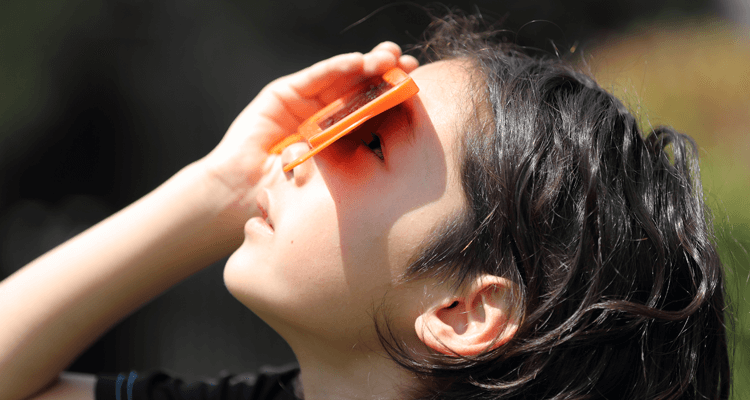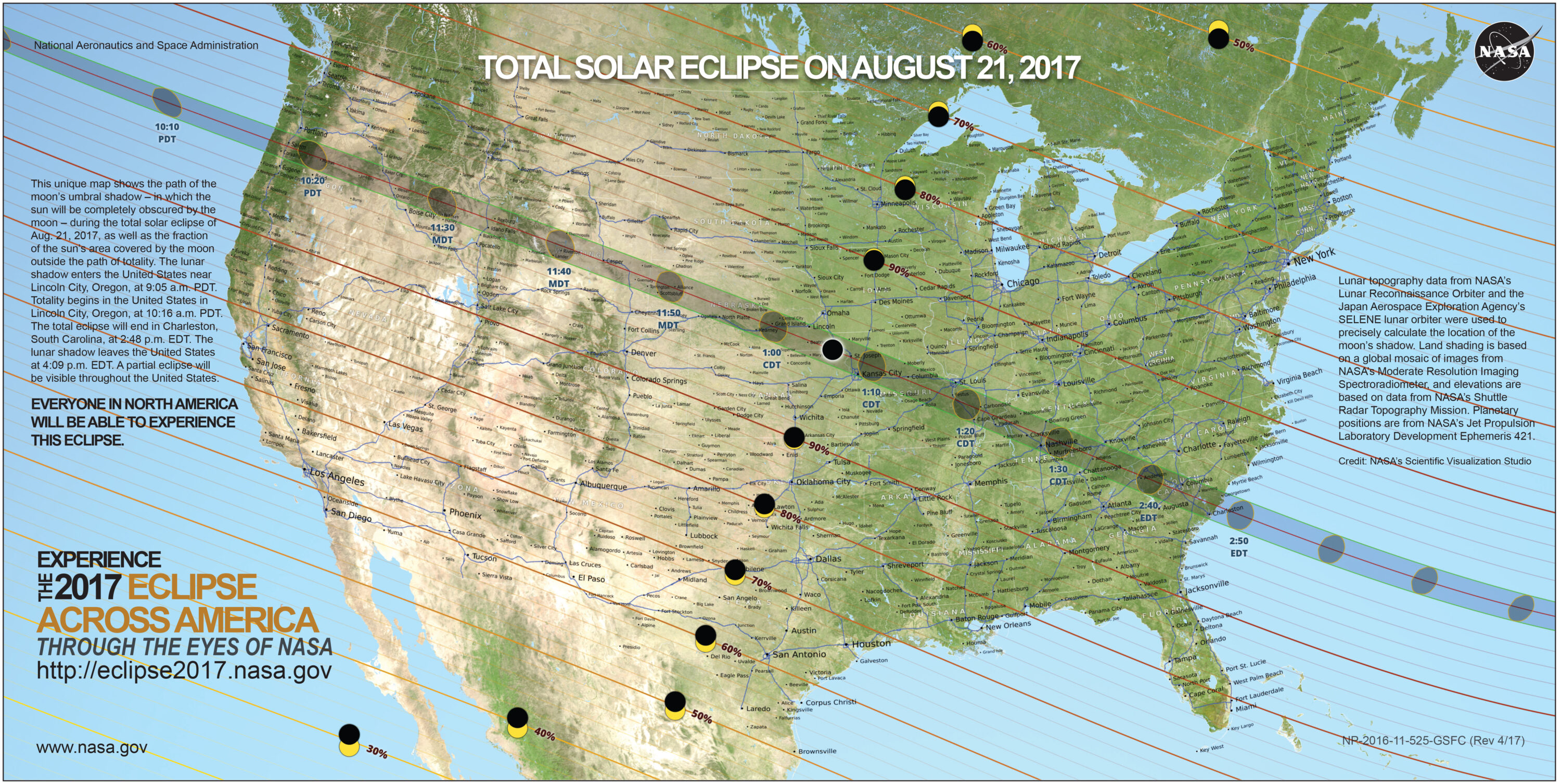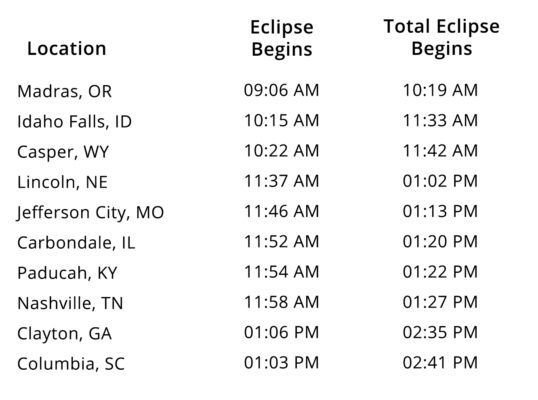Ask a scientist to describe a solar eclipse, and you are likely to hear words like “sensational” or “breathtaking.” Bill Cooke of NASA calls it, “the most weird, creepy, awe-inspiring astronomical event you will experience.” And Astronomer Tyler Nordgren says, “It is this incredible multi-sensory experience that absolutely no photograph can do justice.”
But you don’t have to be a scientist or an astronomer to appreciate the enormity of a solar eclipse event. In fact, some people are so eager to witness these unique shows in the sky that they will travel the globe just to catch one in action. These “eclipse chasers” keep a log of the number of eclipses they’ve seen and share their experiences with others. For most, it was seeing an eclipse for the first time that sparked their passion to see more. “Staring up at that hole in the sky, I just literally froze,” astronomer Glenn Schneider tells NPR about his first experience viewing a solar eclipse—he has since witnessed 33 solar eclipses. “I couldn’t move. It was just such a literally awe-inspiring moment.”
A solar eclipse occurs when the moon moves directly between the sun and Earth during its rotation around Earth. The moon then blocks the light from the sun and casts a shadow over parts of Earth. The type of solar eclipse depends on how much of the sun is covered (or eclipsed) by the moon. During a partial solar eclipse, the sun will just appear to have a shadow because the sun, moon, and Earth are not exactly in line. And an annular eclipse doesn’t block the entire view of the sun because the moon is the farthest from Earth, so it appears to be smaller. A total solar eclipse, however, will cause the sky to be dark for those directly under it because the sun, moon, and Earth are in a direct line, so the moon is briefly covering the light from the sun for those directly under it.
On Monday, August 21, 2017, everyone in North American will get the chance to see a solar eclipse. For some, it will be a partial eclipse but for those who are fortunate enough to be in the “path of totality,” it will be a total solar eclipse! According to NASA, the total eclipse will be visible to all from “Lincoln Beach, Oregon, to Charleston, South Carolina.” The fact that the eclipse will travel from one end of the United States to the other makes this an especially rare event that is being called the “Great American Eclipse.” The last time a solar eclipse could be seen from the contiguous United States was 38 years ago, on Feb. 26, 1979, and the last total solar eclipse that traveled from coast to coast in the U.S. was in 1918.
Clearly, this is an event worth noting and sharing with your children. If you have the chance to view the eclipse together as a family, you’ll likely be making memories that will last a lifetime! Read on for some helpful information to guide you through the process.
2017 Total Solar Eclipse Map of the U.S.
image credit: NASA
Cities in the Path of the Total Eclipse
How to See the Eclipse in Your State
While those in the 70-mile-wide corridor will have the best opportunity to witness the darkened skies from the total solar eclipse, everyone in the U.S. can still take part in the experience. Visit NASA’s interactive map to determine when the solar eclipse will take place in your area. And you can watch the eclipse in action via live streaming on NASA TV “Eclipse Across America,” which will feature coverage from ground telescopes and airplanes at 12 locations. Slooh, an astronomy education site, will also host live streaming of the “Transcontinental Total Solar Eclipse” that will offer full color views and commentary by their astronomers.
The Dangers of Looking Directly at the Eclipse
Eclipse or not, it’s never safe to look directly into the sun. Even briefly staring into the sun can cause temporary damage, called solar retinopathy, because of the ultraviolet light hitting the retina. People looking up at the sun for a longer time, even up to 100 seconds, may suffer more permanent damage to their eyes, including corneal burns, cataracts, and malignant growths. “Sunlight damages the eye as its light is focused by the cornea and lens onto the central retina, or macula, where it causes a retinal burn, which then forms a scar,” explains Dr. Joseph G. Chacko, a euro-ophthalmologist at the Harvey and Bernice Jones Eye Institute.
Staring into an eclipse can be even more dangerous than looking at the sun because your natural instinct to look away from the brightness of the sun is diminished due to the shadow from the eclipse. “You can stare at the sun during an eclipse for 10 minutes, and it doesn’t hurt,” Pediatric Ophthalmologist Vike Vicente tells The Washington Post. “You can just look at it, and it’s really cool to look at it, but that whole time you’re literally burning the cells off your retina.” Using a camera, magnifying glass, or telescope is even worse, say experts, unless you use a solar filter to block out the damaging rays.
How to Safely View the Eclipse
If you plan on viewing the eclipse in your area, be sure to properly protect your eyes. Instruct your children on the dangers of looking directly at the sun without some form of eye protection. Here are some resources for safely viewing the eclipse:
Purchase Eclipse Glasses (Be safe and purchase accredited glasses. The American Astronomical Society (AAS) offers a list of recommended vendors.) Many science museums, libraries, and schools are also offering free eclipse glasses.
Get a Solar Filter (Solar filters can be purchased for your camera, binoculars, or telescope for safe viewing.)
Buy a Solar Optical Projector (These devices allow you to safely view the eclipse indirectly via lenses that project the image.)
Make a DIY Card Projector using cardboard or paper plates.
Make a DIY Pinhole Projector using aluminum foil and a cardboard box.
Educational Resources
The upcoming eclipse offers a perfect opportunity for parents to introduce their kids to science and perhaps spark a lifelong interest in astronomy. Visit the websites below for some fun and easy activities you can do with your kids to teach them about the science of a solar eclipse.
NASA’s Eclipse Art Projects
Decorate your eclipse glasses, make a time capsule, or create an eclipse dance video with these creative activities.
NASA’s Science Activities
Challenge your student with these science activities that highlight the sun and the planets.
Eclipse Activity Guide
NASA also offers this extensive activity guide that you can download for your family. It provides a number of activities and resources, including crossword puzzles, diagrams, experiments, and educational lessons related to eclipses.
Eclipse Safari App
Space.com partnered with Simulation Curriculum to create this informative solar eclipse app that includes an interactive map and updated news about the eclipse.
Whether you enjoy the Great American Eclipse by streaming its progress across the nation or you venture outside to see it in action, take advantage of the learning experience and be safe!






































